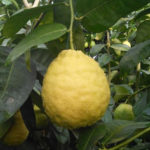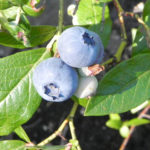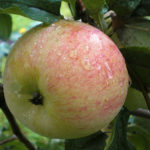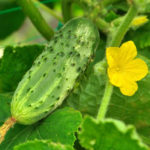Hydrangea paniculata Pink diamond
Gone are the days when the rose was considered the most beautiful noble flower. Nowadays, there are many cultivated plants and their varieties that are ready to compete with her in attractiveness. For example, more and more flower growers prefer hydrangea, the number of varieties of which reaches eight dozen. If you are also sympathetic to this culture, then you will surely succumb to the charm of the Pink Diamond.
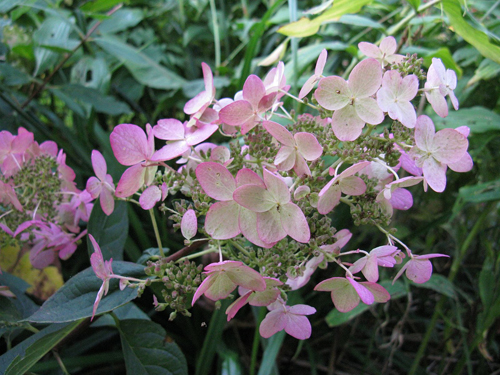
Description of appearance and features
This plant belongs to the category of panicle hydrangeas. It has quite impressive dimensions: a height of about 2 meters, a width and even more - up to 300 cm. The shoots of the bush are tough, strong, growing vertically upwards. Young stems are characterized by a reddish-brown color. Pink Diamond leaves are dense, oblong, matte, rough to the touch, dark green in color, with finely toothed edges. The annual growth of an ornamental shrub is approximately 30 cm.
In the midst of summer on Pink Diamond, inflorescences of incredible beauty appear. They are large, up to 35 cm in length, with a wide base, but rather loose. The shape of the inflorescences can be pyramidal or conical. The panicles are composed of both sterile and fertile flowers. Each of them has 4 petals. At first, the flowers are creamy white, then they become creamy. Gradually, the inflorescences turn pink and by the end of the flowering phase, that is, in September, they become almost red. This play of shades makes the panicle hydrangea very effective.
Pink diamond can undoubtedly be grown in a big city, since the air polluted by exhaust gases does not have a detrimental effect on the culture. The shrub does not make any special claims to care. It has an amazing ability to quickly restore shoots damaged by frost or mechanically. The variety is not afraid of cold weather and feels great when the air temperature drops to -35 ° C. In general, he easily adapts to unfavorable environmental conditions, therefore he rarely gets sick and becomes a victim of insect pests. It is worth noting the high degree of resistance of the bush inflorescences to rain.
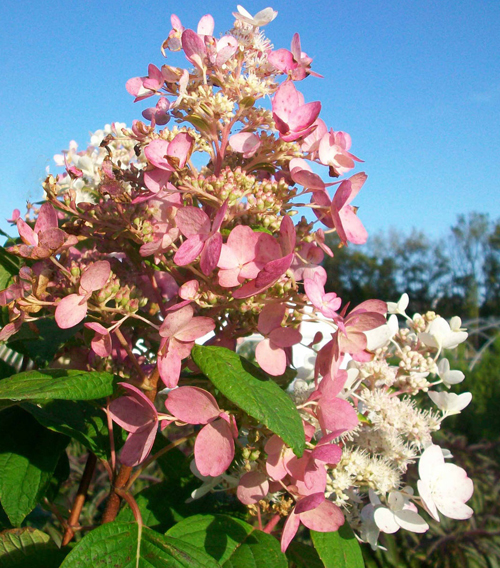
Growing and care
The beauty with pink inflorescences belongs to light-loving crops. You can place it in partial shade. It is better to protect the hydrangea from direct sunlight, otherwise the delicate flower petals will be covered with burns and lose their brightness. Drafts won't do Pink Diamond either.
Pink diamond prefers loose, moderately moist soil with a high humus content and an acidic reaction. You should not plant this variety in a land rich in limestone - with such a substrate, you will not expect a decorative appearance from the plant. You can use specialized soil for planting, or make a soil mixture yourself from 2 parts of peat, the same amount of humus, 1 part of leafy soil and 1 part of sand.
The plant should be planted away from large shrubs and trees so that they do not have the opportunity to take moisture from your pet, for which she is very generous. It is worth keeping a distance of 1 meter between crops, given the width that the bush grows. The planting hole is dug up to a depth of 30 cm. A layer of drainage material must be present in it; the root collar of the plant does not need to be buried. At the end of planting, the hydrangea is watered, after a while the ground under the flower is loosened. After the mulching of the trunk circle is carried out. For this procedure, sawdust or pine needles are used, which also acidifies the soil.
Watering Pink Diamond should be regular. Do not allow the land under the crop to dry out. Up to 30 liters of water is poured under one adult bush, which must first be allowed to brew to soften and warm up a little in the sun. Frequency of soil moistening under the flower: 1-2 times a week, depending on weather conditions.
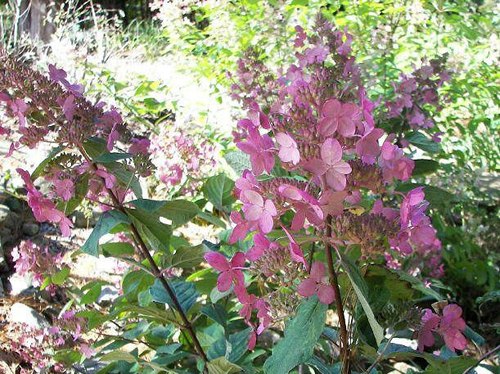
Top dressing also needs to be given great attention.In the spring and early summer season, hydrangea needs nitrogen. A shrub can get it from organic fertilizers such as slurry. In the same period, complete fertilization with microelements must be applied to the soil. All this is necessary to stimulate growth and the appearance of green mass on Pink diamond. When the buds begin to form, treat the beauty with superphosphate and potassium sulfate. Repeat this feeding twice more until the end of summer. Mineral feeding of the plant will not be superfluous in the fall, in order to create conditions for successful wintering.
Be sure to include pruning in your Pink Diamond care plan. In the spring, it consists in removing broken and diseased shoots, in shortening healthy and strong stems to 3-5 buds on each. Autumn pruning affects dried old inflorescences.
The shrub does not need to be covered if the winters in your area are mild and warm. In the case of severe frosts and, especially, minimal snow cover, it is better to insulate the culture in the fall. This is easy to do: the shoots need to be bent to the ground and sprinkled with fallen leaves or straw. First of all, this should be done with young specimens, because the level of winter hardiness of hydrangeas increases with age.
The plant can be attacked by pests such as aphids or powdery mildew. For preventive purposes, the culture must be treated with drugs such as Vitaxid or Oxychoma. The folk remedy - a soap-garlic solution - has also proven itself well.
Use cases
Pink diamond is included in flower and shrub compositions. Companions of panicle hydrangea can be conifers, herbaceous perennials, crops with red leaves. Pink diamond looks equally good with delicate clematis, hosts and humble cereals. The beauty of the varietal plant is emphasized by the lovely verbena. The hydrangea just looks gorgeous as a single bush. This variety is used in landscape design for landscaping country gardens, flower beds, front gardens, school yards, territory at hospitals, clinics, sanatoriums.
